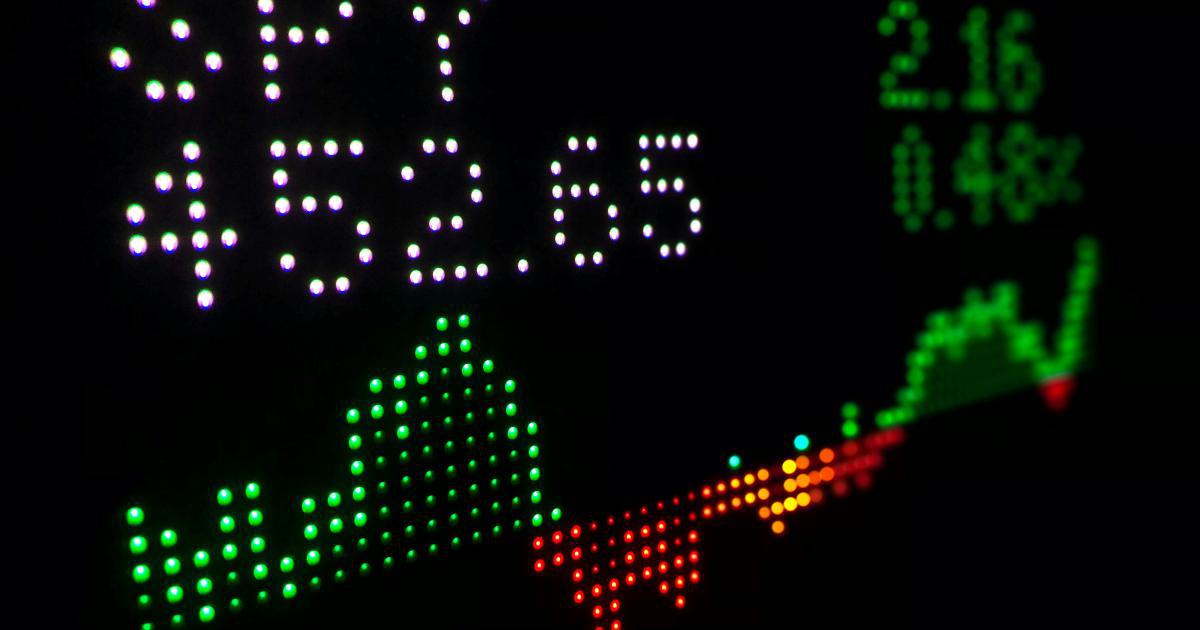Emotional Detachment or Mindfulness in Trading Psychology?

Trading is not just about technical analysis, market trends, or algorithms—it is also deeply rooted in psychology. Whether you embrace emotional detachment or mindfulness in trading psychology, understanding your mental approach is essential for success. In the early moments of your trading journey, you may find that your emotional states—be it excitement, fear, or greed—can influence your decision-making processes. Many traders today debate whether to adopt an emotionally detached approach or to cultivate mindfulness to navigate the tumultuous highs and lows of the market. This article dives deep into these two contrasting yet sometimes complementary strategies, offering a comprehensive analysis of their roles, benefits, and potential pitfalls.
In this detailed exploration, we will break down what trading psychology entails, how emotional detachment and mindfulness each play a role in a trader’s life, and the best practices for integrating these concepts. Using real-world examples and actionable steps, this article is designed for both new and experienced traders who are looking to fine-tune their mental frameworks. Here, we investigate the core philosophies behind emotional detachment and mindfulness in trading, analyze their impacts on trading performance, and offer clear guidance on when and how to apply these methodologies in a trading environment.
Understanding Trading Psychology
Trading psychology encompasses the mental and emotional aspects that impact decision-making, risk management, and ultimately, profitability. Financial markets are unpredictable, making the trader’s mindset a critical advantage. A stable and disciplined mental state can often bridge the gap between success and failure in a volatile market.
The Role of Emotions in Trading
Every trader, whether seasoned or novice, experiences a plethora of emotions. Excitement during winning streaks, fear during downturns, and regret after a miscalculated risk are common experiences. Emotional trading, however, introduces a level of unpredictability that many argue hampers objective decision-making. This is why many experts advocate for a systematic approach to managing emotions, emphasizing the importance of consistency, discipline, and a well-defined strategy.
Key Emotional Pitfalls
- Fear and Anxiety: Many traders experience these emotions during market downturns, leading them to exit trades prematurely.
- Overconfidence: A series of wins may lead to excessive risk-taking, resulting in poor decision-making.
- Regret and Frustration: Experiencing losses can create a lingering effect, making it difficult for traders to recover psychologically and apply objective analysis in future trades.
The Imperative for Mental Discipline
Mental discipline in trading reduces impulsive behaviors and helps build a foundation for long-term success. By adopting techniques that refocus the mind—whether through emotional detachment or mindfulness—traders can construct a more resilient approach to handling market volatility. This discipline allows for a clearer evaluation of risk and reward, enabling decisions based on facts rather than fleeting emotions.

Emotional Detachment in Trading
Emotional detachment in trading emphasizes the importance of distancing oneself from the emotional influences that can cloud judgment. By removing personal biases, traders can focus on objective analysis, adhering to systematic and logical strategies. This section explores the definition, advantages, and practical application of emotional detachment in the trading world.
What is Emotional Detachment?
Emotional detachment, in the context of trading, means separating your personal feelings from your trading decisions. It is rooted in the belief that emotions—whether positive or negative—can interfere with rational thinking and result in impulsive decisions. Traders who adopt this mindset work to regulate their emotional responses, largely relying on technical indicators, algorithms, and predetermined strategies.
The Science Behind Detachment
Studies in behavioral finance have shown that emotional decision-making can often lead to biases such as overreaction to market news, herd thinking, and irrational risk-taking. By cultivating emotional detachment, one can mitigate these biases and maintain a strategy-centric approach to trading.
Advantages of Emotional Detachment
Improved Objectivity: With fewer emotional decisions, traders can base their strategies on data and rational analysis.
Reduced Stress: Detaching emotionally helps in managing stress during volatile market conditions.
Consistent Decision-Making: Following pre-set strategies ensures consistency, vital for long-term success in trading.
Risk Management: Emotional detachment allows traders to stick to their risk management rules without succumbing to short-term market fluctuations.
Real-World Examples
Consider a trader who meticulously follows a technical analysis plan. When the market experiences sudden volatility, instead of reacting impulsively, this trader adheres strictly to their strategy—cutting losses where necessary and holding onto positions as dictated by their plan. This discipline is a testament to the power of emotional detachment. Over time, such traders tend to generate more consistent returns compared to those swayed by temporary emotional responses.
Implementing Emotional Detachment
Achieving emotional detachment requires a blend of self-awareness, rigorous discipline, and systematic planning. Here are some actionable strategies:
- Develop a Trading Plan: Outline clear entry and exit points before initiating any trade.
- Set Realistic Goals: Focus on long-term gains rather than short-term wins.
- Automate Decision-Making: Where possible, use automated systems to execute trades based on predefined criteria, reducing the impact of emotions.
- Regular Self-Assessment: Conduct regular reviews of your trading performance to identify any recurring emotional patterns and adjust strategies accordingly.
Challenges to Maintaining Detachment
While the benefits are clear, maintaining true emotional detachment is challenging. The unpredictable nature of financial markets ensures that even the most disciplined trader may occasionally panic or overreact in unforeseen circumstances. Additionally, human nature inherently resists prolonged suppression of emotional responses, making it a continuous, conscious effort.
Mindfulness in Trading
On the other side of the spectrum, many traders turn to mindfulness—a practice that involves cultivating a state of active, open attention to the present moment—as a tool to enhance performance in trading. This approach does not disregard emotions but instead acknowledges and processes them in a balanced manner.
What is Mindfulness?
Mindfulness is the psychological process of bringing one’s attention to the present moment without judgment. Originating from meditative practices, mindfulness has gained widespread acceptance in both psychological and performance enhancement circles, including trading. In trading psychology, mindfulness helps individuals fully engage with the present, recognizing emotions without being overwhelmed by them.
How Mindfulness Affects Trading Decisions
Practicing mindfulness allows traders to:
- Recognize emotional patterns as they occur.
- Maintain focus during high-pressure situations.
- Create a mental space between stimulus (market events) and response (trading decisions).
In this way, mindfulness can lead to a more measured, thoughtful approach to trading, where decisions are based on clear awareness rather than immediate emotional reactions.
The Benefits of a Mindful Approach
Enhanced Focus: Mindfulness practices help traders maintain a clear and laser-like focus on market analysis.
Improved Emotional Regulation: Recognizing emotions as they arise reduces the risk of impulsive decisions.
Stress Reduction: Daily mindfulness exercises can lessen overall stress, creating a calmer state of mind for decision-making.
Greater Resilience: A mindful mindset fosters the ability to adapt and recover quickly from trading setbacks.
Practical Mindfulness Techniques for Traders
Incorporate these mindfulness practices into your daily routine to enhance trading performance:
- Meditation Practices: Start or end your trading day with a short meditation session to center your thoughts.
- Mindful Breathing: Incorporate deep breathing exercises during moments of high stress to restore calm.
- Journaling: Keeping a mindful trading journal can help track emotional responses and decision-making patterns over time.
- Periodic Check-Ins: Set aside a few minutes at regular intervals during trading sessions to step back, take a deep breath, and reassess the current state of mind.
Evidence Supporting Mindfulness in Trading
Research has shown that mindfulness training can reduce the intensity of emotional responses, making traders less reactive to market fluctuations. In studies comparing experienced and novice traders, those trained in mindfulness techniques demonstrated lower levels of stress and a more consistent application of their trading strategies. By actively cultivating mindfulness, traders build an inner resilience that allows for more strategic and well-thought-out decisions.

Emotional Detachment or Mindfulness: A Comparative Analysis
In the realm of trading psychology, the debate often centers on whether emotional detachment or mindfulness is the superior path toward success. However, these approaches are not mutually exclusive. In this section, we will explore the similarities, differences, and potential synergies between emotional detachment and mindfulness in trading.
Identifying the Core Differences
-
Approach to Emotions:
- Emotional Detachment: This strategy emphasizes the suppression of emotions to avoid their influence on trading decisions.
- Mindfulness: Rather than suppressing emotions, mindfulness encourages acknowledging and understanding them, using this awareness to inform decisions.
-
Methodology:
- Emotional Detachment relies on rational analysis and strict adherence to pre-determined strategies.
- Mindfulness combines rational analysis with self-awareness, making space for emotions without letting them dictate behavior.
-
Impact on Decision-Making:
- With emotional detachment, decisions are driven by systematic rules and objective analysis, often resulting in swift and sometimes rigid responses during market changes.
- Mindfulness fosters a calmer, more reflective decision-making process, allowing traders to adjust more fluidly in response to market dynamics.
Synergizing Both Approaches
Experienced traders have found that integrating elements of both emotional detachment and mindfulness can create a balanced approach. An optimal trading strategy might involve:
- Setting up rules and algorithms that enforce emotional detachment during the execution phase.
- Incorporating mindfulness practices in the pre-trading and post-trading phases to ensure a clear and focused mindset.
By combining the strengths of both, traders can remove the detrimental influence of strong emotions during critical moments while also maintaining the self-awareness necessary to learn from each trading experience.
Case Study: A Balanced Trading Approach
Consider the example of a seasoned trader who uses a systematic trading algorithm to execute trades. This trader practices emotional detachment during live trading, relying solely on predetermined signals. However, before entering the trading floor and after closing his positions, he engages in a brief mindfulness meditation to clear his mind, reflect on the market conditions, and recalibrate for the next session. This combination has led to improved consistency and a significant reduction in stress-related errors.
Incorporating the Keyword Effectively
In examining the benefits of both emotional detachment or mindfulness in trading psychology, it becomes clear that a hybrid approach can be particularly effective. This strategy leverages the discipline and consistency provided by emotional detachment while integrating the self-awareness and stress management benefits offered by mindfulness. Ultimately, the successful trader must assess personal preferences, market conditions, and risk tolerance to decide the best mix of both philosophies.
Best Practices for Integrating Psychological Techniques into Trading
Having discussed the core principles of both emotional detachment and mindfulness, we now explore actionable strategies to integrate these approaches into your trading routine.
Crafting a Structured Trading Plan
A well-defined trading plan is the cornerstone of effective trading psychology. The plan should include:
- Clear entry and exit points based on technical and fundamental analysis.
- Defined risk management parameters such as stop-loss and take-profit levels.
- A detailed post-trade review process to reflect on emotional responses and decision-making effectiveness.
By building a structured plan, traders can embed both objective strategies and personal mindfulness practices, leading to greater consistency in their performance.
Daily Mindfulness Routines
To incorporate mindfulness into the trading routine effectively:
Begin the day with a meditation or breathing exercise to set a calm and focused mindset.
Schedule short mindfulness breaks during trading hours, especially during periods of high market activity.
End the day with a journaling session that includes reflections on both the technical outcomes and the emotional journey experienced throughout the trading session.
Periodically revisit and adjust your mindfulness techniques to keep them effective and relevant to changing market environments.
Mechanisms for Maintaining Emotional Detachment
Implement these techniques to help maintain emotional detachment:
- Rely on analytics: Trust the data and established algorithms to execute trades, limiting the need for emotionally driven decisions.
- Practice delayed gratification: Avoid making snap decisions by imposing a waiting period before finalizing trades.
- Regular mental reset: Engage in non-trading-related hobbies or physical exercise to keep stress levels in check and maintain mental clarity.
Institutional Strategies and Coaching
For professional traders or trading teams, implementing institutionalized strategies can support both emotional detachment and mindfulness:
- Develop a regular coaching program where traders discuss emotional challenges and share effective mindfulness techniques.
- Use simulation trading environments to practice emotional detachment in a risk-free setting.
- Incorporate biofeedback tools that help traders monitor their stress levels and receive real-time guidance on practicing mindfulness.

Combining Technical Analysis with Psychological Strategies
An effective trading strategy is rarely solely technical or solely psychological. An integrated approach that melds both technical analysis and psychological insights can offer a significant competitive edge. Let’s explore how this synergy works in practice.
Technical Analysis as a Backbone
The backbone of most trading strategies is technical analysis—the study of past market data, primarily price and volume. Technical indicators can signal trends, reversals, and support/resistance levels, forming the basis for systematic trading decisions. However, even the most robust technical analysis is vulnerable when clouded by unchecked emotions. Incorporating either emotional detachment or mindfulness—ideally, both—ensures that the technical signals are interpreted without bias.
Role of Psychological Training in Technical Decision-Making
Psychological training can amplify the efficiency of technical analysis by ensuring that the trader’s mind remains clear and focused. Practices such as pre-trading mindfulness meditations can help clear any negative residual emotions from previous sessions, allowing for a more detached observation of technical signals. Conversely, for traders who employ a strict system ruled by numbers and charts, regular mindfulness check-ins act as an invaluable counterbalance to prevent burnout and maintain overall well-being.
Real-World Examples of Integration
A day trader using algorithmic signals may incorporate mindfulness sessions to reduce the emotional drag during volatile market swings. When technical signals trigger, the mind is both alert and calm, ensuring quick but measured decisions.
A swing trader might schedule regular review sessions, combining deep technical chart analysis with reflective journaling to understand how emotional states during previous trades influenced subsequent outcomes. Adjustments are then made not only in the technical strategy but also in the trader's approach to managing emotions.
Future Trends in Trading Psychology
The field of trading psychology is evolving, with increasing interest in hybrid models that integrate advanced analytics with psychological insights. Emerging trends include:
- The use of artificial intelligence to monitor trader sentiment and provide real-time feedback.
- Virtual coaching platforms that combine market analysis with personalized mindfulness exercises.
- Empirical studies evaluating the long-term impacts of integrated emotional detachment and mindfulness strategies on trading performance.
Practical Applications and Expert Tips
Whether you lean more towards emotional detachment or mindfulness in trading psychology, the following expert tips can help refine your approach:
Expert Tip 1: Personalize Your Approach
Recognize that there is no one-size-fits-all strategy. Some traders thrive with a cold, data-driven approach, while others benefit from a holistic, mindful routine. Experiment with both strategies and a combination thereof to discover what best suits your personality and trading style.
Expert Tip 2: Incorporate Regular Reviews
Develop a habit of reviewing your trading sessions not only for technical performance but also for emotional responses:
- Note moments when emotional decisions altered your strategy.
- Assess whether those decisions align with your overarching trading plan.
- Adjust either your technical setup or your psychological practices based on these reflections.
Expert Tip 3: Use Technology to Your Advantage
Modern trading platforms and mobile apps now offer integrative features for mindfulness and stress tracking. Consider using tools that:
- Provide notifications for potential overtrading triggers based on heart rate variability.
- Allow you to schedule mindfulness breaks during periods of high market activity.
- Keep a digital trading journal that logs both technical data and emotional state indicators.
Expert Tip 4: Educate Yourself Continuously
Invest in courses, workshops, and literature focusing on both trading psychology and technical analysis. The intersection of emotional detachment and mindfulness in trading is a complex field that demands continuous learning and adaptation.
Expert Tip 5: Stay Adaptable
The market never stands still, and neither should your psychological strategies. Regularly revisit and update your methodologies to reflect learning, changes in market dynamics, and personal growth as a trader.
Conclusion: Balancing Detachment and Mindfulness in Trading
In conclusion, whether you choose emotional detachment or mindfulness in trading psychology ultimately depends on your personal temperament, trading style, and long-term goals. Emotional detachment offers the promise of objective, rule-based decision-making free from the interference of momentary emotions. In contrast, mindfulness embraces the full spectrum of what you feel, using that awareness for better self-regulation and adaptability.
By understanding the unique benefits and challenges of both approaches, you can create a hybrid framework that suits your individual needs. Trading is as much a mental game as it is a technical one; achieving performance excellence means continuously refining both your strategies and your mindset.
The journey towards mastering trading psychology is ongoing. Whether faced with exhilarating highs or challenging downturns, a well-balanced approach ensures that you remain effective, resilient, and ultimately profitable. Integrate the tools of emotional detachment with the calming focus of mindfulness, and your trading decisions will be informed not solely by impulse or strict logic, but by a harmonious balance that continually adapts to the ever-shifting market landscape.
Remember, every successful trader’s journey is marked by a continuous learning process—both in the technical realm and in personal development. Your ability to harness emotional detachment or mindfulness, or ideally recombine the best of both, can become your most potent asset in navigating the complexities of trading psychology.

In summary, the debate between emotional detachment or mindfulness in trading psychology is not about choosing one path over the other, but about understanding when and how to incorporate each into your broader strategy. Combining the unwavering discipline of emotional detachment with the reflective clarity provided by mindfulness can transform your approach to trading, paving the way for sustainable success in an unpredictable market environment.
Embrace the journey, continuously refine your approach, and let your trading practices evolve as you gain deeper insights into the intricate interplay between mind and market.
By aligning your trading strategy with a robust psychological framework, you ensure that each decision is made with clarity, precision, and a balanced understanding of both market dynamics and your own inner workings. The true mastery of trading lies in this balance—where data meets discipline, and intuition meets insight.
Far beyond charts and signals, the mastery of trading psychology is the mastery of oneself. Use the power embedded in emotional detachment and mindfulness to build a resilient trading practice that can withstand the vicissitudes of the market and lead you steadily toward your long-term financial goals.
Let this article serve as your guide to harnessing both the cold logic of detachment and the deep insight of mindfulness as you navigate every twist and turn of the trading world. May the lessons shared here empower you to trade with confidence, clarity, and a calm mind.
Unlock Your Trading Potential with Edgewonk
Struggling to improve your trading performance? Edgewonk's advanced analytics tools are designed to give you the edge you need.
With detailed trade journaling, robust strategy analysis, and psychological insights, you'll gain a comprehensive understanding of your strengths and weaknesses. Don't miss out on this game-changing opportunity.
Unlock Your Trading Potential with Edgewonk
Struggling to consistently achieve profitable trades? Edgewonk's cutting-edge analytics empower you to analyze your performance and refine your strategies.
Our advanced trading journal software provides detailed insights, psychological analysis, and personalized recommendations tailored to your unique trading style.

